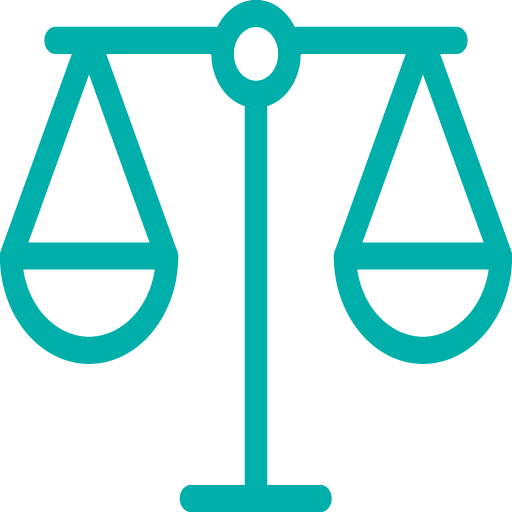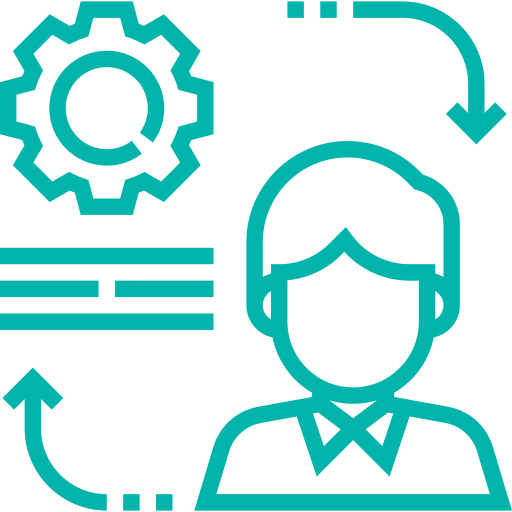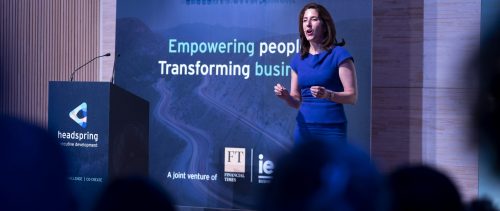Roche: Preparing for the Future of Pharma
How Roche worked with Headspring to change mindsets, enhance leadership skills and capabilities to get ready for the future of global informatics.
A series of global workshops designed to help Clifford Chance’s top management team to better advise their clients.

Making ethical decisions isn’t always black and white. A concern facing all 3,300 Clifford Chance fee-earners around the world is insufficient time for reflection, engagement and debate on ethical risks.
Headspring co-designed, in close collaboration with Clifford Chance, a program that aims to bring people together and discuss how to decide what’s right and find the courage to act on those decisions. From. The programme consists of a series of 20 workshops, delivered globally, whose objectives are to:

Embeding the firm’s ethical standards into the day-to-day mindset and behaviour of its people.

Equip lawyers with the skills to judge what is right especially when the pressure to say ‘yes’ is high.

Empower lawyers to find the courage to act on their decisions, and to help their clients do the same.

Reflect on how quickly a business reputation built over decades could be potentially destroyed.
In order to deliver the results expected by Clifford Chance, Headspring enrolled a team of global experts who truly understand reputation matters:

The first workshop consisted of an interactive missing-word quiz that uses FT news headlines on issues that test the ethical legal judgement of the participants through recent and current moral dilemmas.
The headline reports the news of an ethical fail by a well-known business person or company.
Through the technique of story-telling, the activity aims to show the participants how ethical risks lie in every step of the way, and the consequences of ignoring ‘ethical red flags’.

For the second session, Michael Skapinker presented the story of Zelda Perkins, one of Harvey Weinstein’s victims in the late 1990s, who at the time was offered a settlement by Weinstein’s lawyers and a non-disclosure agreement. Nineteen years later, Ms Perkins told her story to the Financial Times and divulged what happened, revealing the terms of the NDA.
Working in teams, participants discussed and reflected on the role of a ‘just representative of the law’ should have been in this case:
❯ What are the ethical issues?
❯ What are the reputational risks here?
❯ What moral obligations does an employment lawyer have if criminal activity such as sexual assault is repeatedly alleged by employees?
❯ What about bullying and harassment more generally?
❯ What can we learn from the Harvey Weinstein experience?

In the third workshop, every participant of the programme was invited to take the MoralDNA, a personality profile designed to help people understand their moral values, how they prefer to make good decisions and do the right thing.
Prof Steare talked about how ‘Law, Love, and Logic’ (respectively: Rules, Outcomes and Principles) influence today’s global businesses. How do we deal with those principles as individuals and as professionals – and why? During his session, he also presented the MoralDNA™ test results and discussed with the participants their positions in respect to ethics in personal life and at work, and their perceived moral values.
“In everything we do we have to consider what this could look like in the press. Having an FT journalist to bring this home was very powerful and made a real impact.”
Bahare Heywood, Chief Risk and Compliance Officer at Clifford Chance

In the fourth session, groups are instructed to work on a case – involving a fictitious company seeking logging operation licences in an equally fictitious country – that stretches their attitude to
solving ethical dilemmas – covering.
The case description they base their discussions on also provides five main notions, each relating to a potential ethical red flag. Halfway through discussions, one final aspect is revealed which acts as a game-changer and confronts participants with the question of doing the right thing but risking losing a multi-million fee revenue client.
FT journalist Michael Skapinker used the headline generator to show how the words, language and sentiments they propose would look in a newspaper headline. This allowed participants to see how a misused word or phrase can be used against the company if shared on social media that – in a moment – can destroy the firm’s reputation.
Delivering deep and current insights into real business-relevant topics, we will help your team stay abreast of technological, political or economic trends as they happen.

A high-impact leadership program created to meet the demands of the world we live in. Fully online.

Learn from some of the world's most influential and well-connected Financial Times journalists.

We design and deliver transformative learning solutions to some of the world's largest businesses.
How Roche worked with Headspring to change mindsets, enhance leadership skills and capabilities to get ready for the future of global informatics.
How BBVA nurtured a culture of innovation through Momentum, a unique program of training, mentorship, strategic support, networking opportunities, and access to funding for social entrepreneurs.
How Santander Bank leveraged Headspring’s online resources to create large scale solutions to train and keep over 16,000 staff compliant with new regulation.
Meaningful business transformation starts from within. These are some of the clients whose businesses we’re helping to reinvent, with programmes designed to bring out the best in their people.
















Co-creation is one of the key principles of the Headspring approach. We don’t assume we have the answers – instead, we work with our clients to create and deliver a solution that meets its main goals and objectives. As part of this process, the next steps will include:



